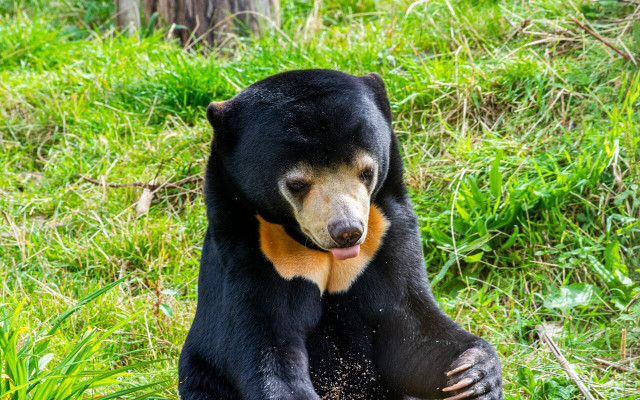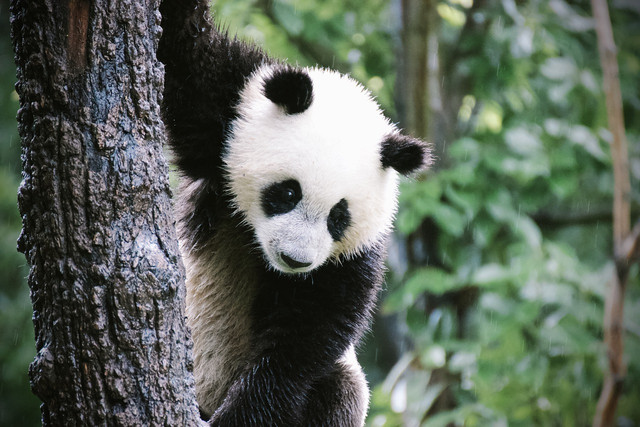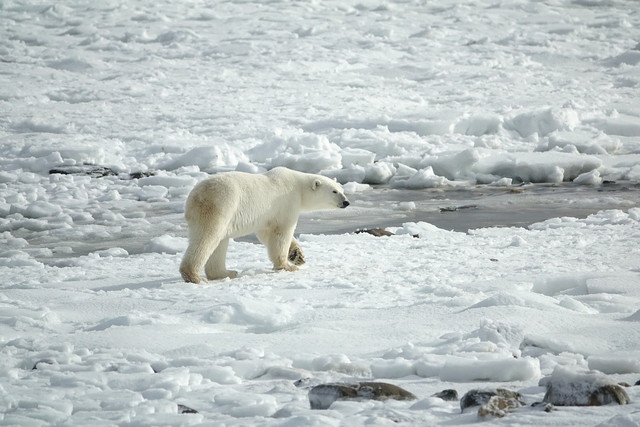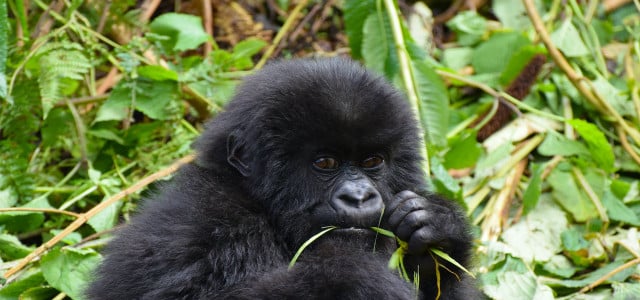Although they're at the top of the food chain, bears are not imperious to human activity. That's why certain bears are endangered – let's take a closer look.
Bears are beautiful, strong animals which can be found all over the world, but their numbers are dropping. Count yourself lucky if you’ve seen a bear in the wild while hiking or camping. There are eight different species of bears and their IUCN Red List status ranges from “least concern” to “endangered”. Brown bears and grizzly bears are of least concern, but there are six remaining species that are considered to be either vulnerable or endangered. We’ll take a closer look at which bears are endangered.
Which Bears are Endangered?



(Foto: CC0 Public Domain / Unsplash / Darren Welsh)
Of the eight species of bears found across the globe, six of them are very much at risk. Three common species of bears are considered to be vulnerable, which means they are facing a high risk of extinction in the wild:
- Polar Bear: the polar bear is the largest of the bear family. They can get up to nine feet in length and weigh well over a thousand pounds. Polar bears reside in the Arctic and spend most of their lives on sea ice and in the water. Their diet is made up mostly of seals. Polar bears are listed as a vulnerable species, and their population is estimated at somewhere between twenty and thirty thousand remaining.
- Panda Bear: the giant panda is also a vulnerable species, with less than two thousand estimated to be living in the wild. Panda bears are fairly small, and only reach up to three hundred pounds. They live in temperate forests in the mountains of southwest China and feast on many pounds of bamboo per day.
- Andean bear: also known as the spectacled bear, the Andean bear is native to South America. They have short, strong legs and enjoy solitary lives. The Andean bear is a vulnerable species, with somewhere between six and ten thousand wild bears remaining.
The following three bear species are endangered, which means they are facing a very high risk of extinction in the wild:
- Asiatic Black Bear: characterized by their smooth black fur and V-shaped white mark on their chest, Asiatic Black Bears enjoy coniferous forest habitats. They are officially listed as endangered and their population is unknown. Wild Asiatic black bears reside largely in Cambodia, although Sun Bear sightings are still more common. Asiatic black bears can also be found across the Himalayan foothills, in mainland Southeast Asia and in parts of China, Russia and North and South Korea.
- Sloth Bear: the Sloth Bear is native to the Indian subcontinent. Though relatively large, sloth bears live primarily off of ants and termites. They are an endangered species.
- Sun Bear: largely found in tropical forests across Southeast Asia, sun bears are the smallest of all eight bear species. Commonly referred to as honey bears due to their love of honey, sun bears eat sweet fruits, insects, small rodents and some birds. Their population is unknown, and they are an endangered species.
Threats to Endangered Bears



(Foto: CC0 / Pixabay / qgadrian)
Unfortunately, bears are becoming endangered due to human activity. The main reasons for this include:
- Climate Change threatens polar bears. They are vulnerable to Arctic warming which causes ice melt and pushes them to swim longer distances to hunt and find land for rest. Furthermore, as their sea ice habitat recedes earlier each spring, polar bears are forced to spend more time on land, where they often wander into dangerous human spaces.
- Habitat Destruction for infrastructure development, logging and farming purposes is a common way in which bear populations dwindle. As they lose needed land and prey for subsistence, bears die out. Being forced into closer contact with humans through these industries also causes bears to die out as they are seen as predators and shot at.
- Hunting: many bear species are hunted for their gall bladders as well as other body parts. Their organs are used for traditional medical purposes. Illegal trade of bear fur and pelts is also a driving factor for hunting.
- Captivity: seen as cute, cuddly creatures, bears are unfortunately often taken captive to have as pets or to be used in entertainment. In these cases, bears do not not have the needed resources to thrive. They are often even abused by their owners. Some people even have created bear farms where they breed bears to harvest their gall bladders.
How to Help Bears



(Foto: CC0 / Pixabay / mtanenbaum)
There are some of the steps you can take to help endangered bears:
- Take political action: push your representatives to save threatened bear species. You can use your voice to protest, vote, and contact political officials to create more protected habitat spaces, take action against climate change, and crack down on illegal hunting and trade of bear products.
- Be a responsible consumer: make sure you are not contributing to the demand of bear products by being careful of whom you give your money to. Avoid mysterious medicinal products which may have bear products, and don’t attend bear shows or petting zoos where there are captive bears.
- Fight climate change: do your best not to contribute to the dying out of these species by taking everyday action to fight climate change.
- Donate: donate to animal rights or environmental organizations working to help endangered bears such as the World Wildlife Fund. You can do this by donating money directly, or “adopting” a panda.
- Inform others: speak up and tell your friends and family about the threats to bear populations. Spread the word so that others can get involved in helping restore their numbers.
To learn more about other animal species that might be endangered, read:
- Why Are Tigers Endangered? The 4 Major Threats
- Are Honeybees Endangered? How to Help the Honeybee
- Are Giraffes Endangered? Myths and Truths Explained
- Are Praying Mantises Endangered? Facts & Removal Methods
- Flowers for Bumblebees: How to Help Endangered Bumblebees
Read more:
- Eco-Anxiety: Climate Change Stress and How to Cope
- How to Plant Milkweed Seeds and Help Monarch Butterflies
- Biotic and Abiotic Factors in an Ecosystem — Explained
Do you like this post?








